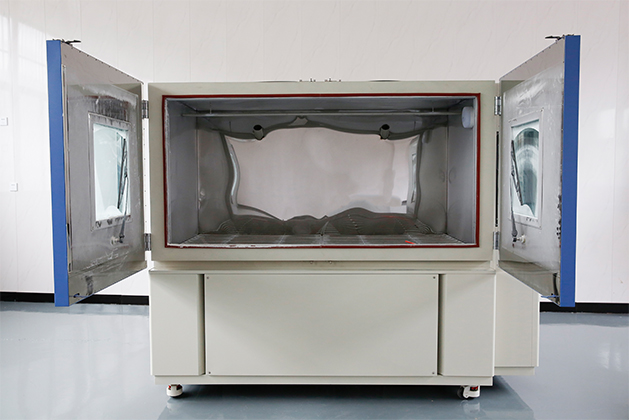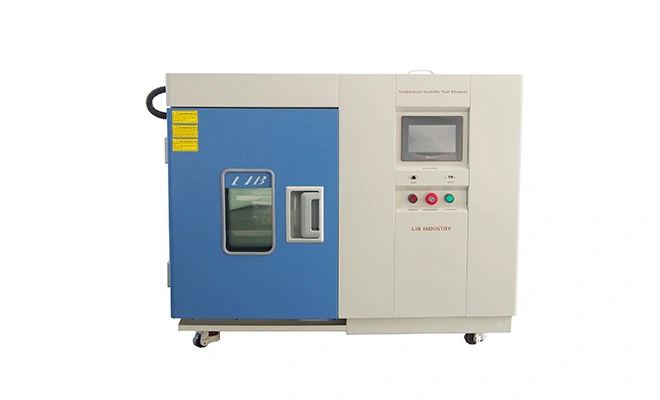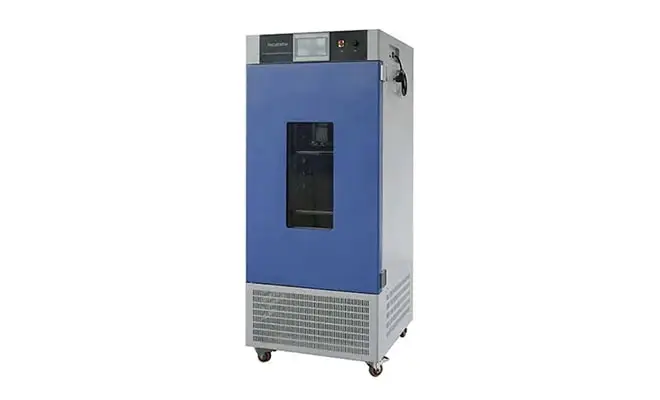

Dust particles not only affect the performance of the equipment, but also may shorten its service life, resulting in an increase in failure and maintenance costs. Dust particles can cause equipment wear (friction coefficient of 0.3~0.5), circuit short circuit (permeability of more than 80% when dust particle size is less than 75μm) and mechanical failure. The dust test chamber simulates the dust environment and provides key data and technical support for the development and optimization of materials, especially in the aspects of dust prevention, wear resistance and corrosion resistance.
The dust test chamber simulates real dust weather conditions by accurately controlling environmental factors such as temperature, dust concentration, wind speed and humidity. During the experiment, the specimen was exposed to the air flow filled with dust particles, which caused friction, wear and erosion on the surface of the specimen, affecting the properties of the material.
An important application of the dust test chamber is to test and improve the dust resistance of materials. In a dust environment, dust particles are easy to penetrate into the inside of the equipment, or adhere to the surface, which will not only affect the appearance of the equipment, but also may lead to electrical failures, mechanical delays and other problems. For example, circuit boards in electronic devices, automotive engine components, key components of aircraft, etc., are vulnerable to dust infestation. Through the dust test chamber, researchers can simulate the invasion process of dust particles, test the dust prevention effect of different material surfaces, and develop new dust coating or structural design to effectively prevent the entry of dust and improve the long-term stability and reliability of equipment.
The dust test chamber provides an accurate experimental platform for the wear resistance test of materials. In the dust environment, the friction of dust particles will aggravate the wear of the material surface, and long-term exposure may lead to the deterioration of the performance of the material, and even functional failure. Especially in the automotive, aerospace and other fields, the wear resistance and long-term use performance of parts are crucial. Through the dust test chamber, researchers can simulate different dust concentration, wind speed and temperature changes under controlled conditions, evaluate the wear resistance of the material, and optimize the material design for different use scenarios.
In addition, the dust test chamber can also help to evaluate the fatigue resistance of the material in the dust environment. Through repeated dust friction tests, the researchers were able to identify the fatigue failure mechanism of the material under multiple loads, so as to optimize the composition, structure and processing process of the material, and improve its long-term durability and reliability.
Model | DI-800 | DI-1000 | DI-1500 | DI-2000 |
Internal dimensions (mm) | 800*1000*1000 | 1000*1000*1000 | 1000*1500*1000 | 1000*2000*1000 |
Overall dimensions (mm) | 1130*1450*1960 | 1330*1450*1960 | 1330*1950*1990 | 1330*2450*1990 |
Temperature range | Ambient to +50℃ | |||
Nominal wire diameter | 50μm | |||
Nominal width of a gap between wire | 75μm | |||
The Talcum powder amount | 2kg ~ 4kg/m³ | |||
 | ||||
You can choose from a variety of sizes, configurations and models, please contact LIB if you have additional requirements for your dust test.
 English
English русский
русский français
français العربية
العربية Deutsch
Deutsch Español
Español

